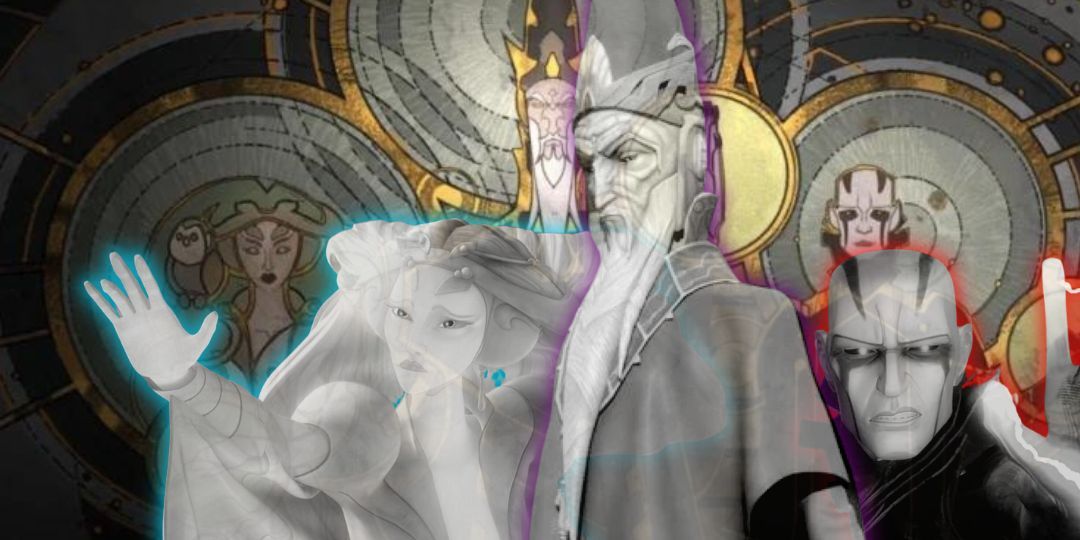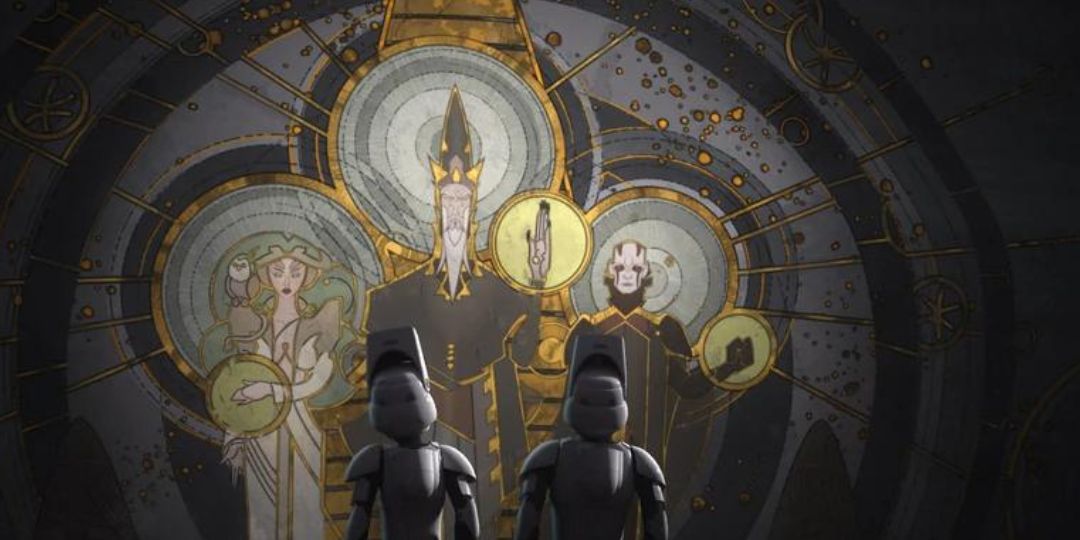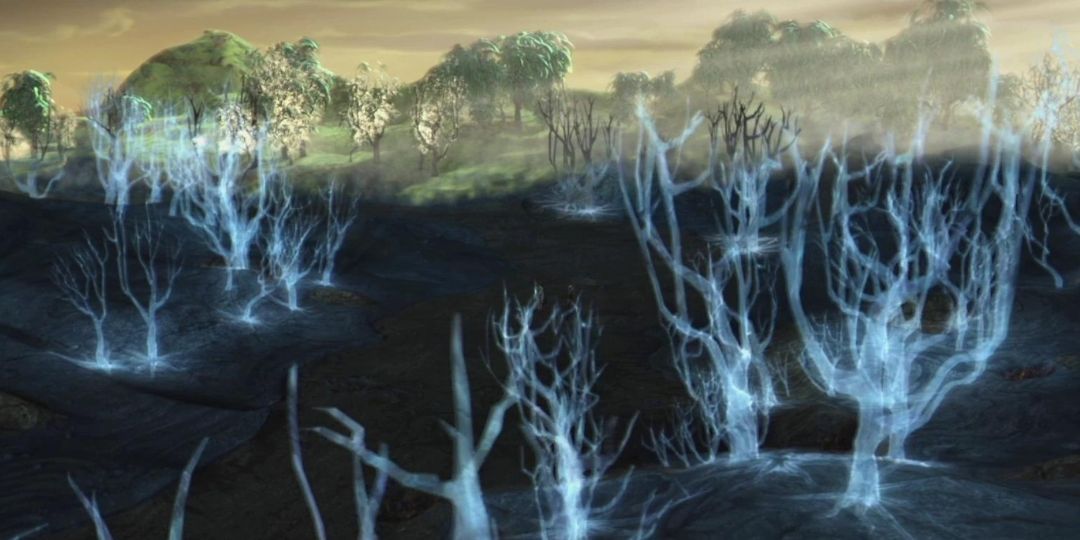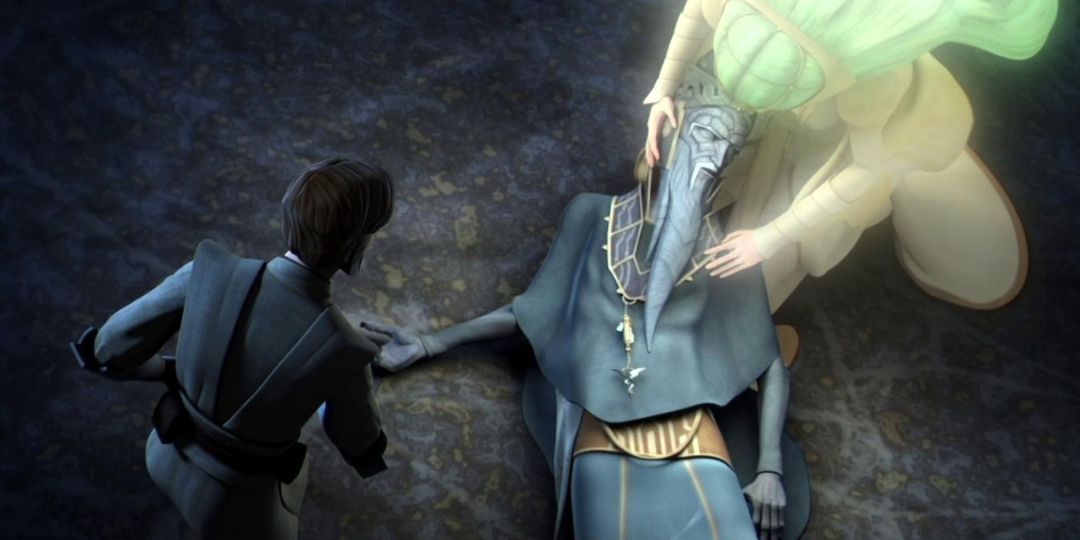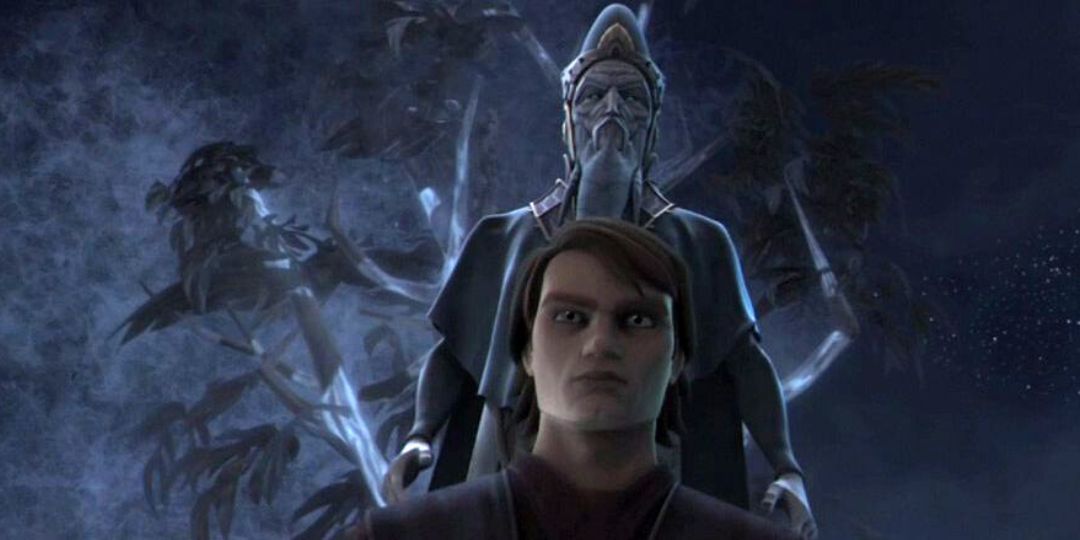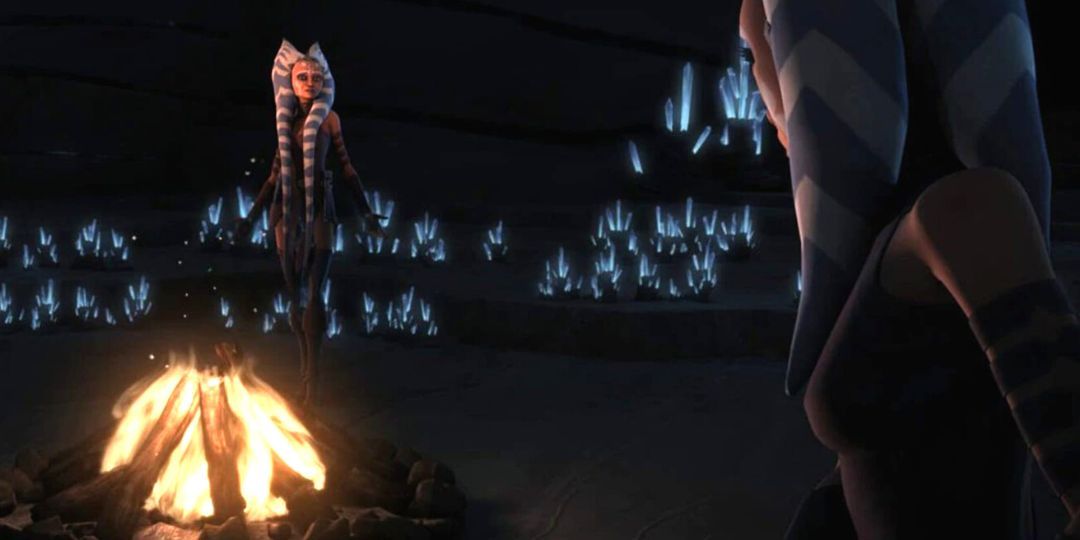Although it might seem like the nature of the Force is black and white, Star Wars lore actually runs much deeper, especially when it comes to Mortis and its inhabitants. Yes, there’s a light side and a dark side, as embodied by the Jedi and the Sith, and a need for balance between the two absolutes. However, there are also ethereal realms and Force-wielding beings who are locked in an eternal feud. It’s the stuff of legend, and “a conduit through which the entire Force of the universe flows.”
For viewers of Star Wars: The Clone Wars, this more mythical side to Star Wars is nothing new. Ahsoka Tano visited Mortis during an arc of the Clone Wars, and what happened to her there may come into play during the upcoming Ahsoka series. So, here’s what Star Wars fans should know about Mortis.
What Is A Mortis God? Mortis Family, Explained
An ethereal realm, Mortis exists outside any star system. In fact, Mortis might even exist outside the galaxy itself. Some even believe it has ties to the very origins of the Force. Rife with ever-shifting, dreamlike environments, Mortis is a stunning, lush paradise during the “day,” but once night falls, it’s withered and dark. This ever-changing place also isn’t bound by the normal flow of time.
The realm’s inhabitants, often referred to as Mortis gods or the Mortis Family, are equally occult. Composed of three Force Wielders, the Mortis family is locked in an eternal struggle for dominance. The trio includes the Son, a manifestation of Mortis’ destructive potential and the dark side of the Force; the Daughter, the embodiment of creation and the light side of the Force; and the Father, a being responsible for maintaining balance between the two at-odds children.
What Episodes Are The Mortis Arc In “Clone Wars”?
In the Clone Wars, the Mortis arc spans three episodes in the show’s third season — Episode 15, “Overlords”; Episode 16, “Altar of Mortis”; and Episode 17, “Ghosts of Mortis.” In the first episode of the arc, Anakin Skywalker, Obi-Wan Kenobi, and Ahsoka Tano are sent to investigate a mysterious transmission. At the rendezvous point, their shuttle loses power, and they're pulled into the gateway to Mortis.
Anakin meets the Father, who takes the form of an old man. The Force Wielder explains that he and his children are so strong in the ways of the Force that they can no longer live in the material world, lest they be tempted by outside influences. The Father explains that he drew the three Jedi to Mortis, believing Anakin to be the true Chosen One. Much like the Jedi Council’s prophecy, the Father thinks Anakin is the key to bringing balance to the Force, though the Father suggests Anakin will do this by taking his place on Mortis, and controlling the whims of the Mortis children.
Although unwilling, Anakin ends up completing the Mortis gods’ test, proving that he’s strong enough with the Force to control the Son and the Daughter, just as the Father does. The Father warns Anakin against leaving Mortis, claiming the Jedi’s selfishness will lead to a devastating outcome. Before Anakin, Obi-Wan, and Ahsoka leave Mortis, the Son tries to tempt Anakin to the dark side. The Son believes that they can overthrow the Father, allowing the dark side of the Force to triumph.
When Anakin doesn’t go along with the Son’s idea, the Force Wielder kidnaps Ahsoka, making her his dark-side pawn. The Daughter, meanwhile, takes Obi-Wan to the Altar of Mortis, which holds the aptly named Dagger of Mortis — a weapon capable of killing the members of the Mortis family. Eventually, the Son takes the dagger and attempts to kill the Father with it, but the Daughter sacrifices herself instead.
During the skirmish, Ahsoka dies, and Anakin begs the Father to bring her back. Using Anakin as a kind of Force-conduit, the Daughter transfers what remains of her life-force into Ahsoka, reviving the Padawan. With the Daughter gone, the Son tries his best to sway Anakin to the dark side again. In his efforts, the Son shows Anakin visions of his future, telling him he can avert these horrors by allying with the dark side.
But the Father has other plans. Furious that the Son has subverted the natural flow of time, the Father wipes Anakin’s memory, steals the Mortis dagger, and impales himself. Stunned, the Son leaves himself open to an attack, and dies by Anakin’s hand. Although unconventional, it’s certainly one way to quell the imbalance on Mortis.
What Do The Mortis Episodes Mean?
A conduit through which the Force flows, Mortis is a fulcrum for the galaxy. The Mortis family, of course, represent the eternal struggle between light and dark, and the need to have balance in the universe. Despite this straightforward premise, the Mortis episodes are anything but reductive. Instead, they foreshadow Anakin’s ultimate fate — his tragic turn to the dark side — and the ways in which it’s an inevitable end.
Visited by a Force-vision of his late mother, Shmi Skywalker, Anakin confesses just how much guilt and pain he’s harboring, from his slaughter of the Tusken Raiders, which he did to avenge Shmi, to his secret marriage to Padmé Amidala. Meanwhile, a Force ghost of Qui-Gon Jinn warns Obi-Wan that being on Mortis could profoundly affect Anakin; and a future version of Ahsoka warns her younger self to be wary of Anakin.
A surface-level reading of the Mortis episodes equates each of the Jedi with one of the Mortis beings. Obi-Wan, though he tends toward the light, tries to keep things balanced, while Ahsoka and Anakin might represent the Daughter and Son, respectively. But nothing is ever that black and white in practice. Obi-Wan doesn’t always make choices in accordance with the Jedi Order, while Anakin makes his fair share of selfless and “right” choices, only to become Darth Vader.
While George Lucas, and the Lucasfilm Story Group, have been firm on the idea that the dark side corrupts absolutely, the Mortis arc argues against such a simplistic view of the Force, and of morality in general. Maybe light doesn’t always overcome the dark.
In the end, the Son is the Mortis being left standing the longest, after all. He kills the Daughter while attempting to kill the very idea of balance, which leads to the Father taking his own life — thus destroying whatever balance remained in the wake of the light being stamped out. Anakin is the one to ultimately kill the Son in the end — and he’s the one to (literally) toss Emperor Palpatine aside and upend his rule in Episode VI — Return of the Jedi. So, maybe no matter one's alignment with the Force, anyone can make choices that keep the world in balance.
Will Mortis Be Featured In “Ahsoka”?
The Ahsoka character’s co-creator, Dave Filoni, will helm the live-action show about the beloved former Jedi. Given that Filoni is the creative mastermind behind Clone Wars, it wouldn’t be surprising if he pulled some of Star Wars’ more esoteric and fantastical elements into the upcoming series.
For quite some time, Ahsoka has been associated with Morai, a Convor that holds a connection to the Daughter of Mortis. After all, Ahsoka was imbued with the life-force of the Daughter in Clone Wars. And, since she isn't a “true” Jedi, Ahsoka's ultimate destiny may be tied to the Mortis family.

